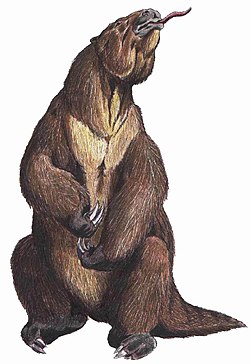| Pelecyodon | |
|---|---|
 | |
| Skull of Pelecyodon cristatus | |
| Scientific classification | |
| Kingdom: | Animalia |
| Phylum: | Chordata |
| Class: | Mammalia |
| Order: | Pilosa |
| Superfamily: | Megatherioidea |
| Genus: | † Pelecyodon Ameghino 1891 |
| Species | |
| |
Pelecyodon is an extinct genus of ground sloths from the Early Miocene (Santacrucian) of South America.

